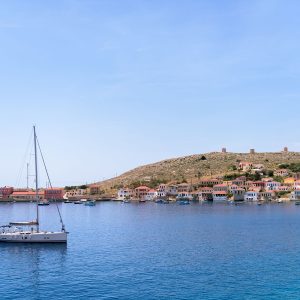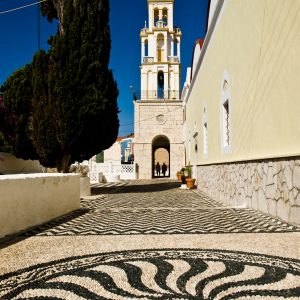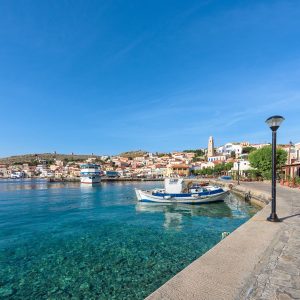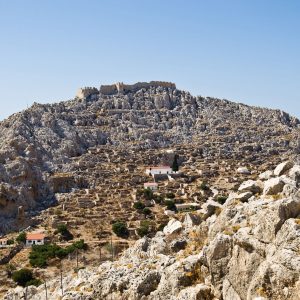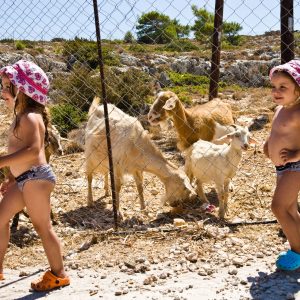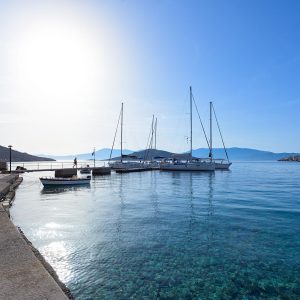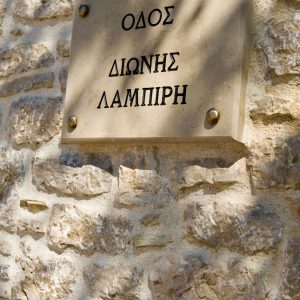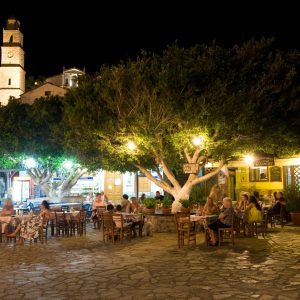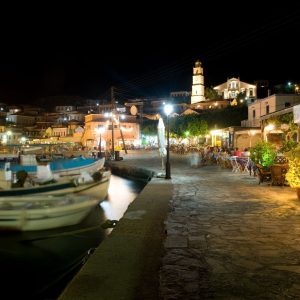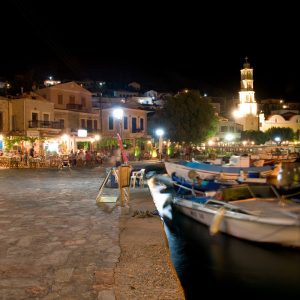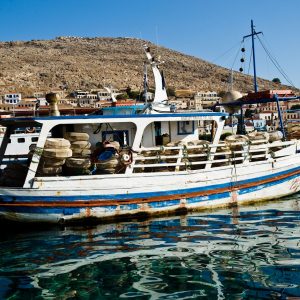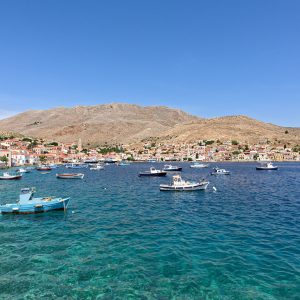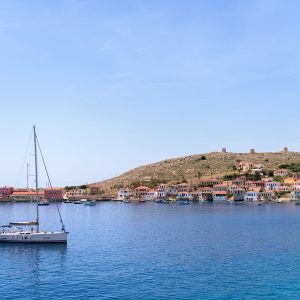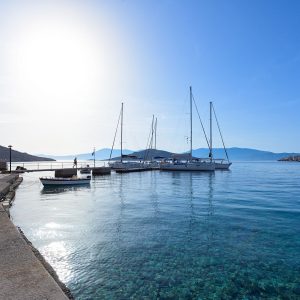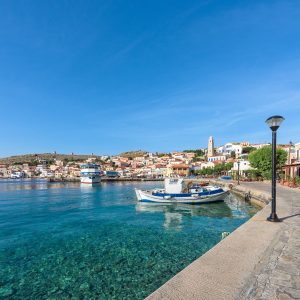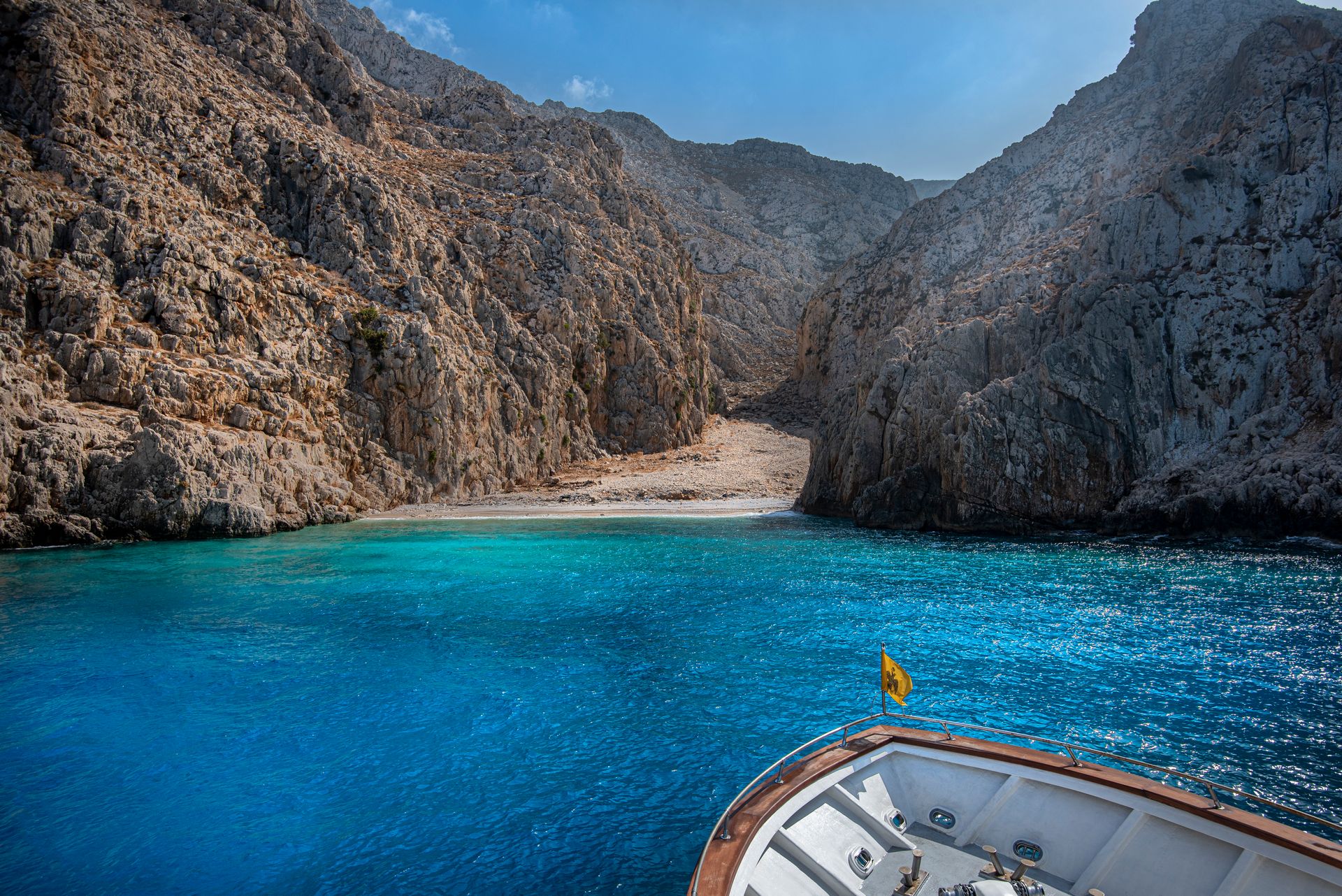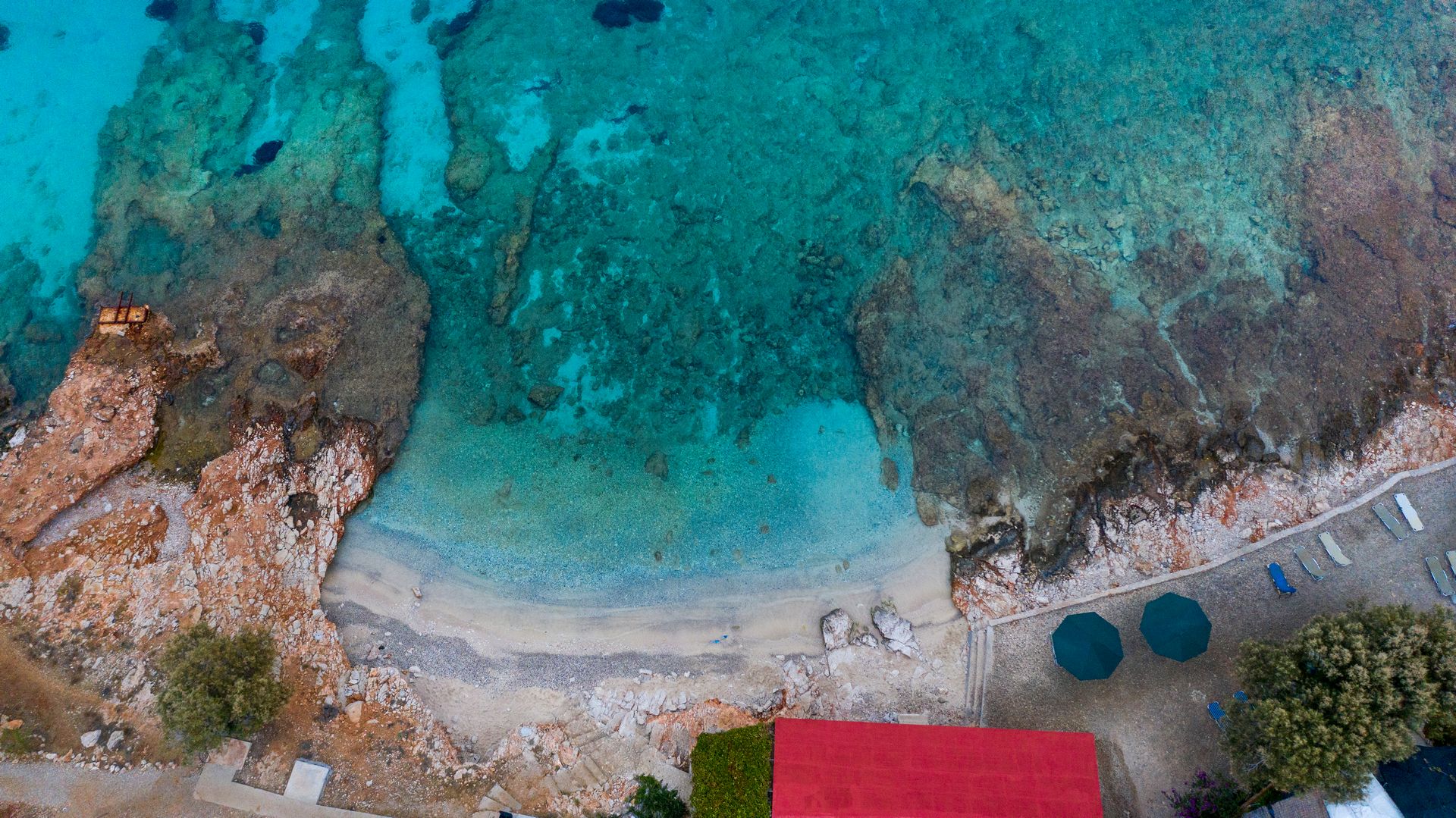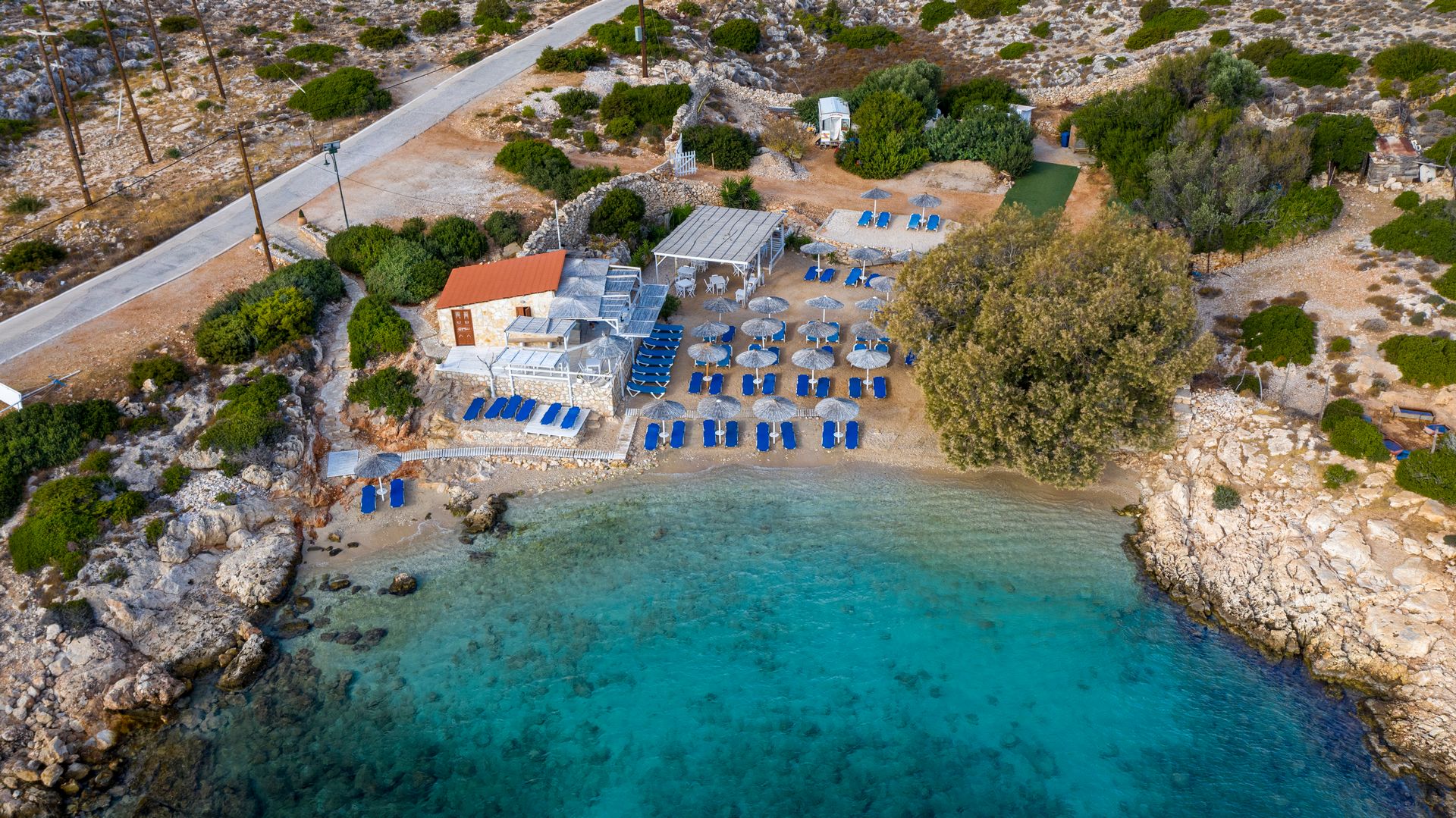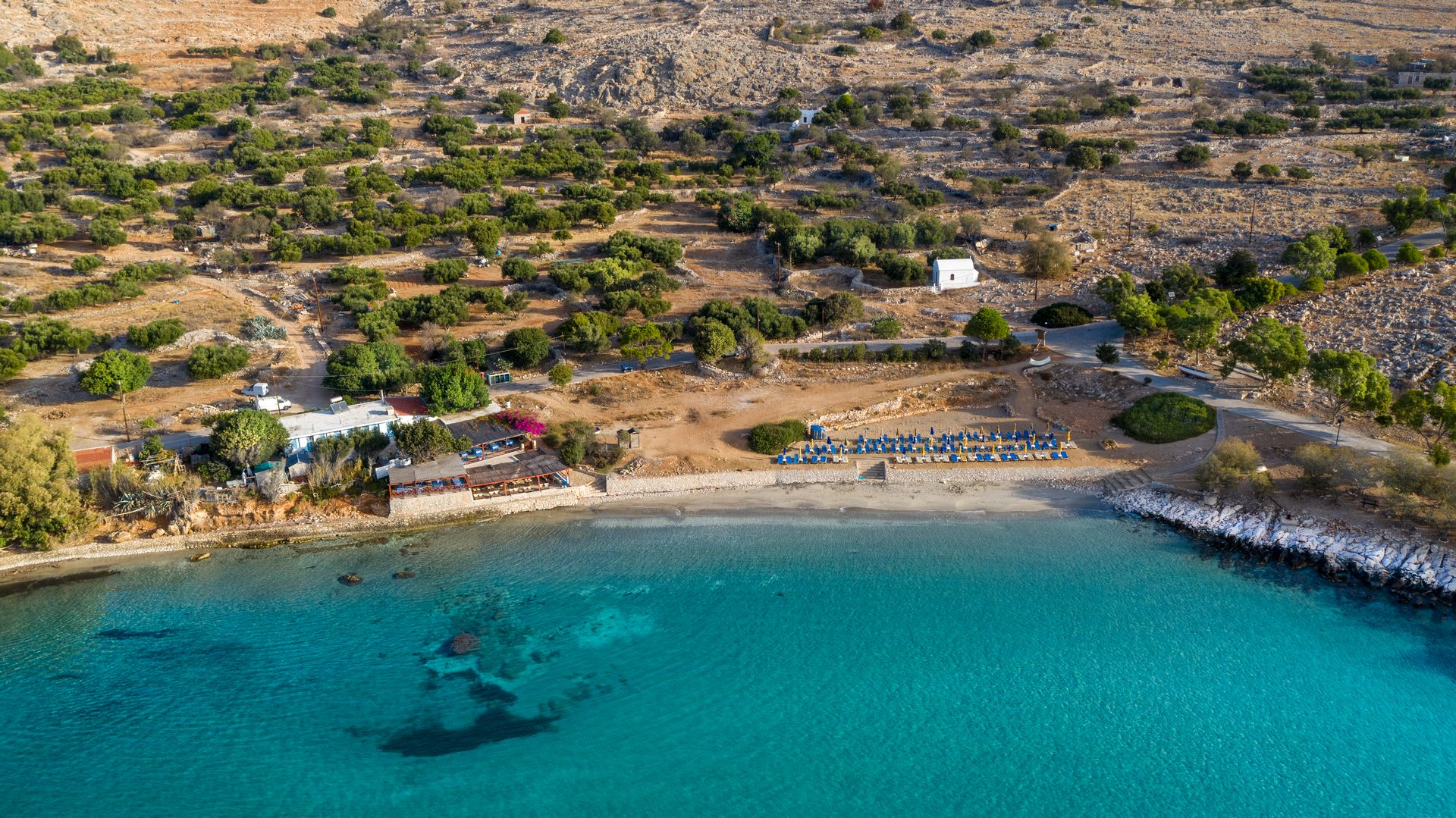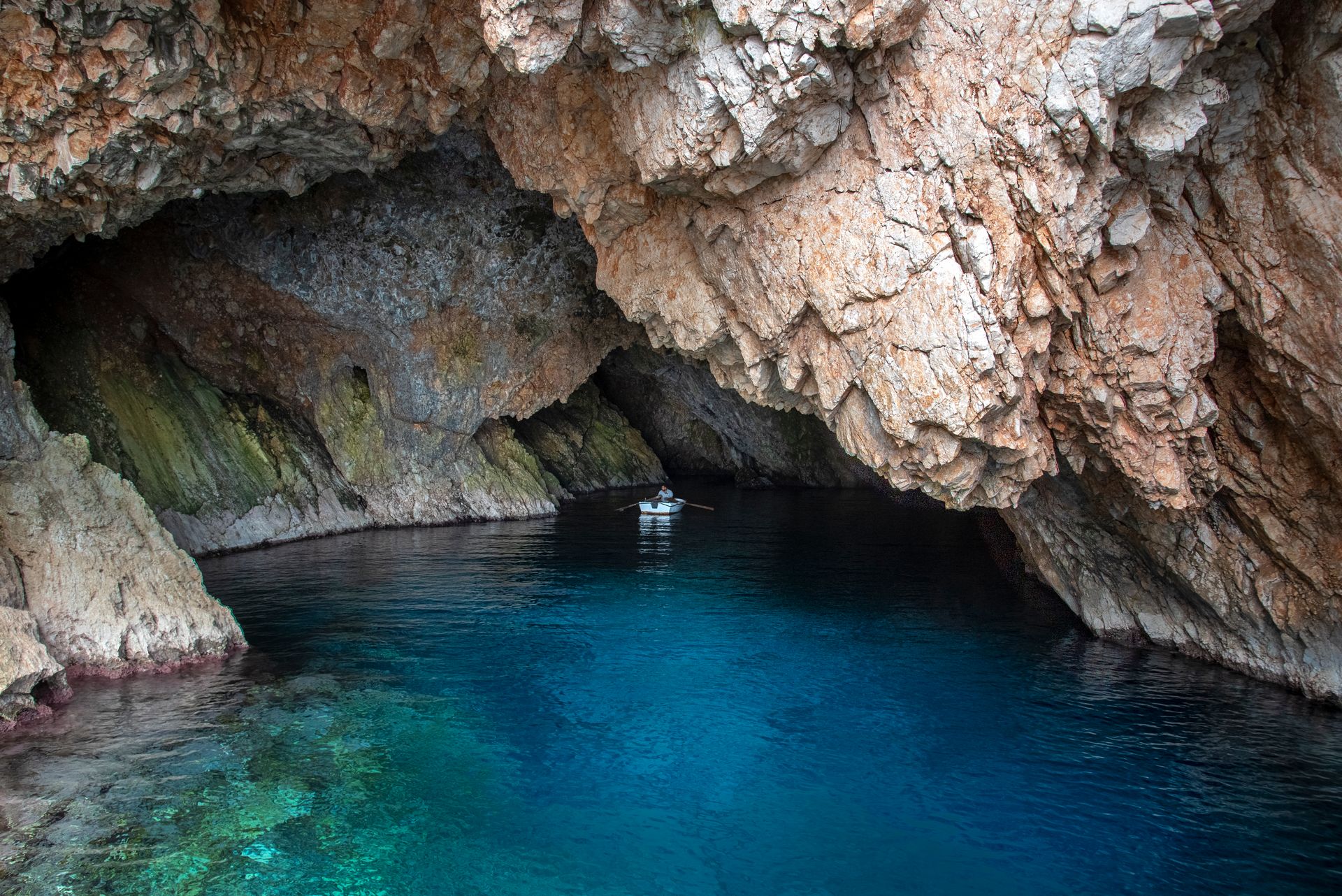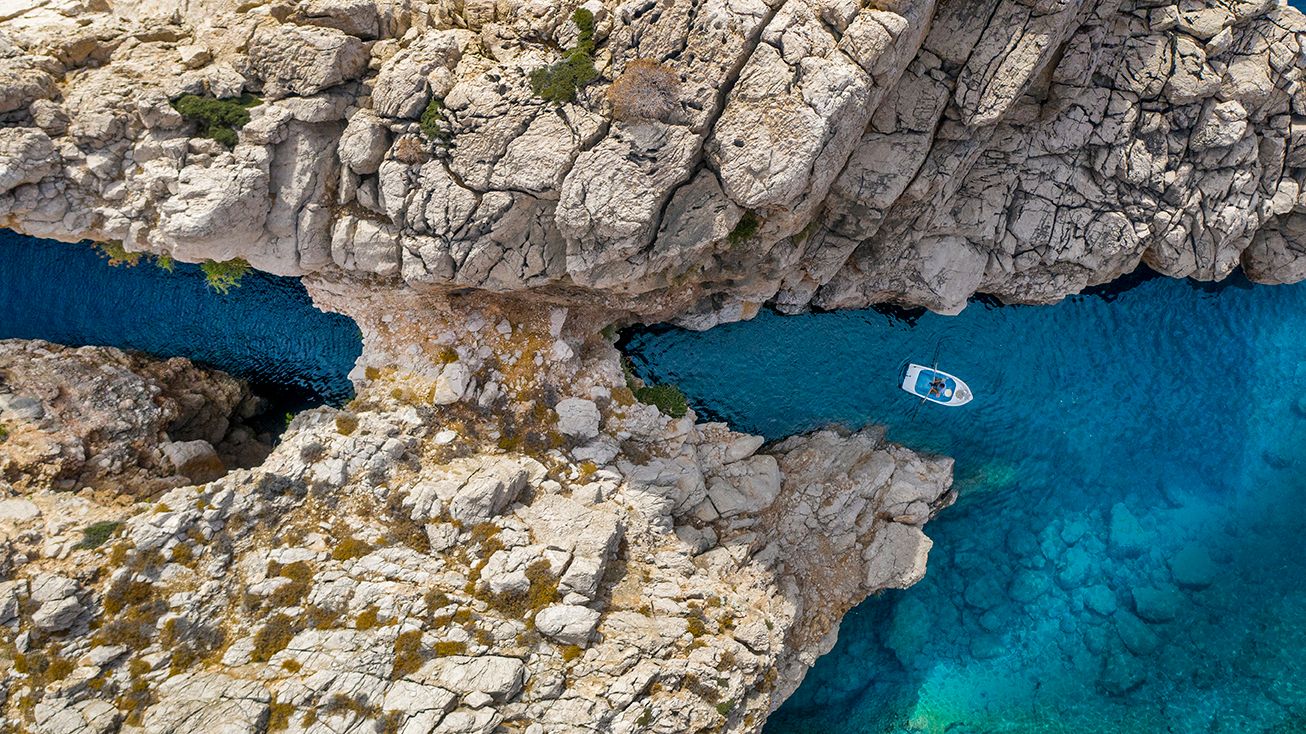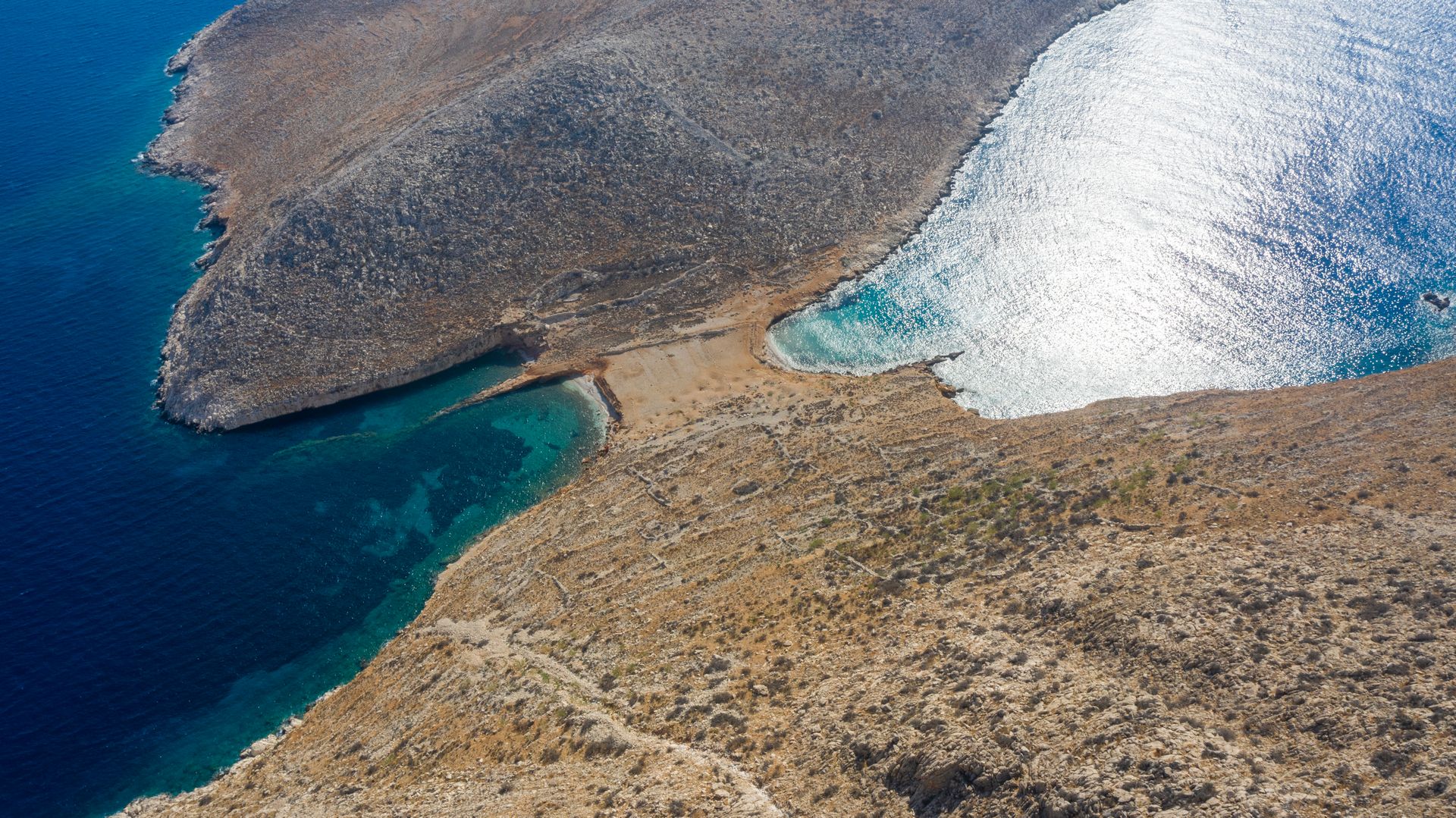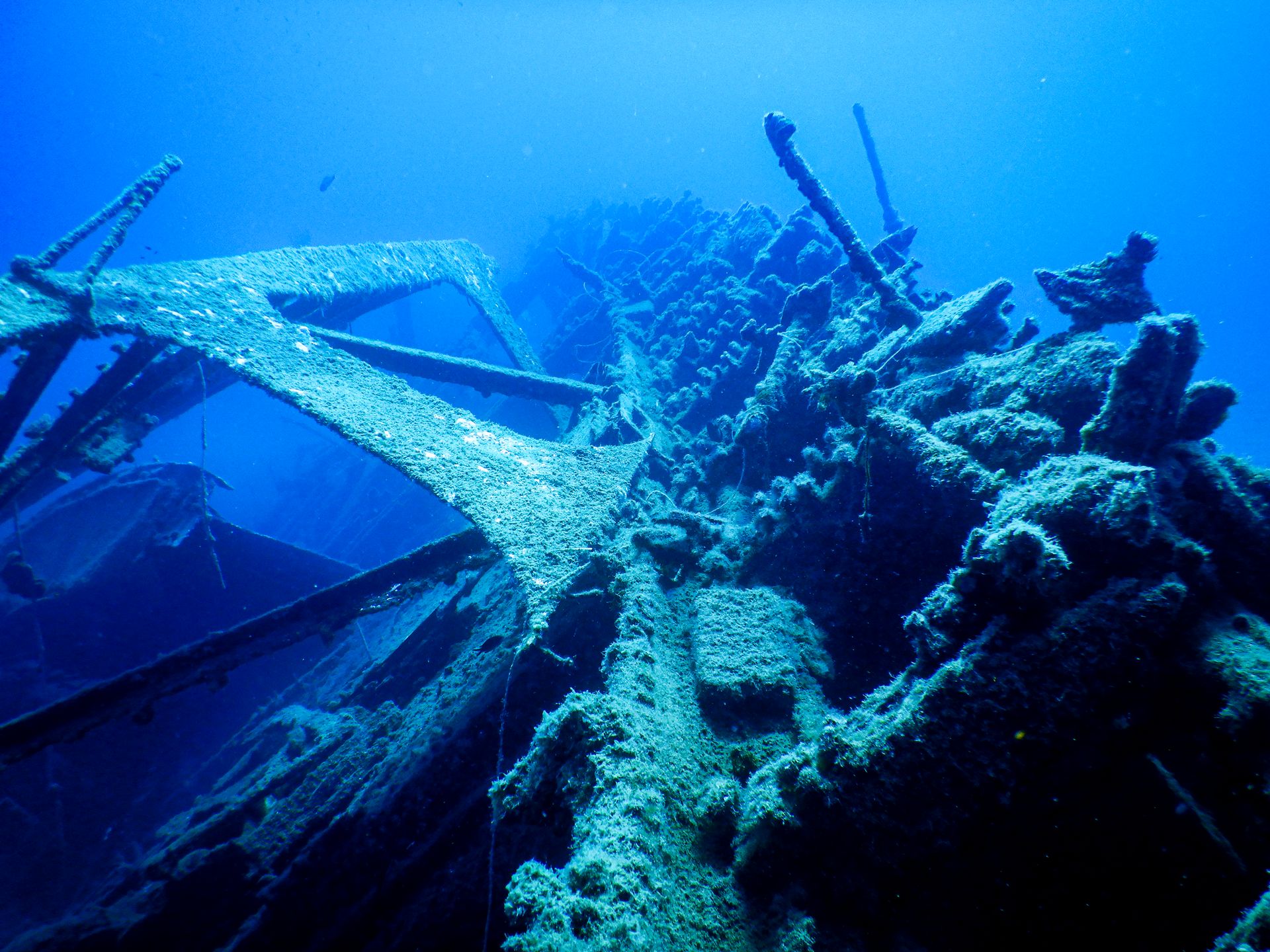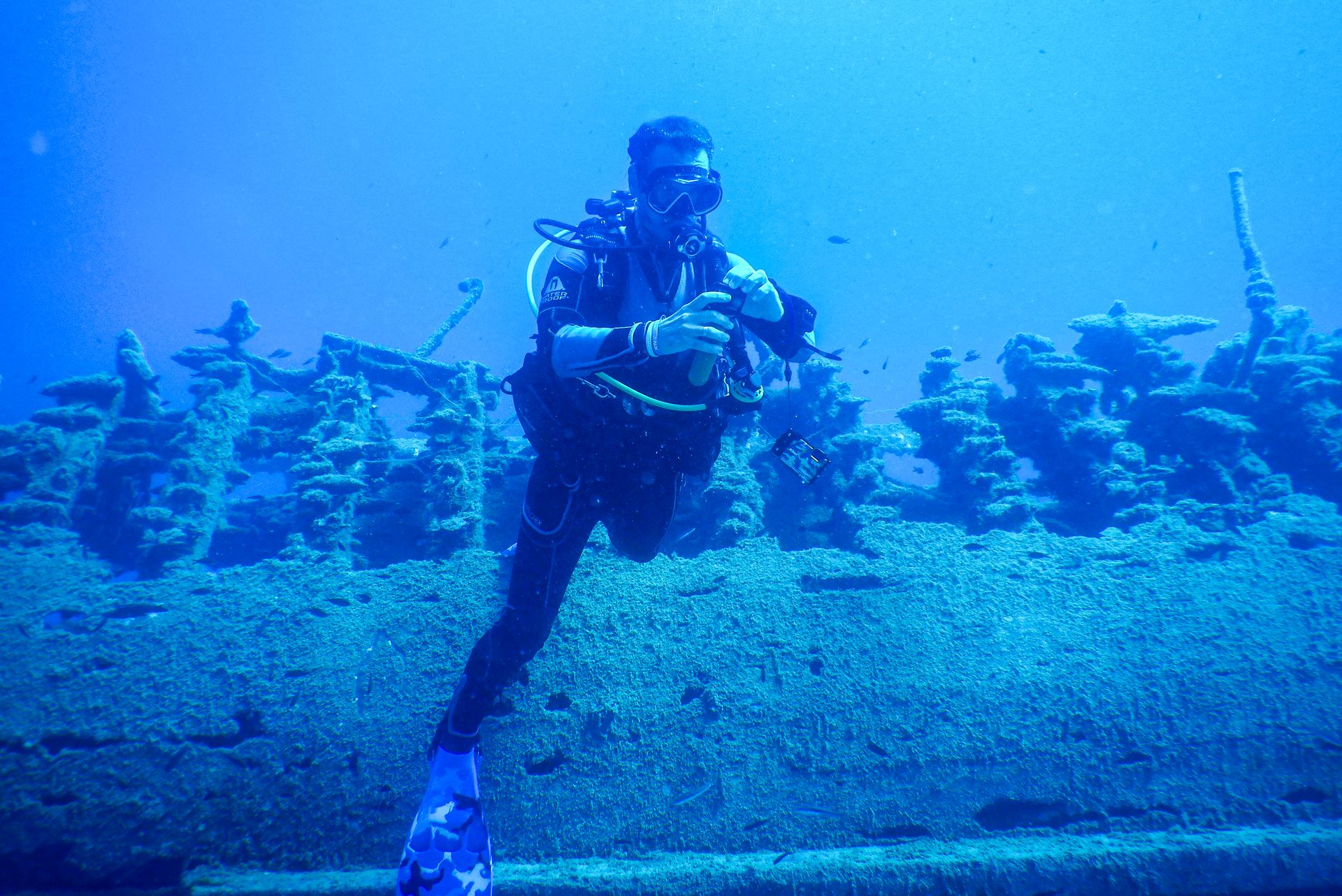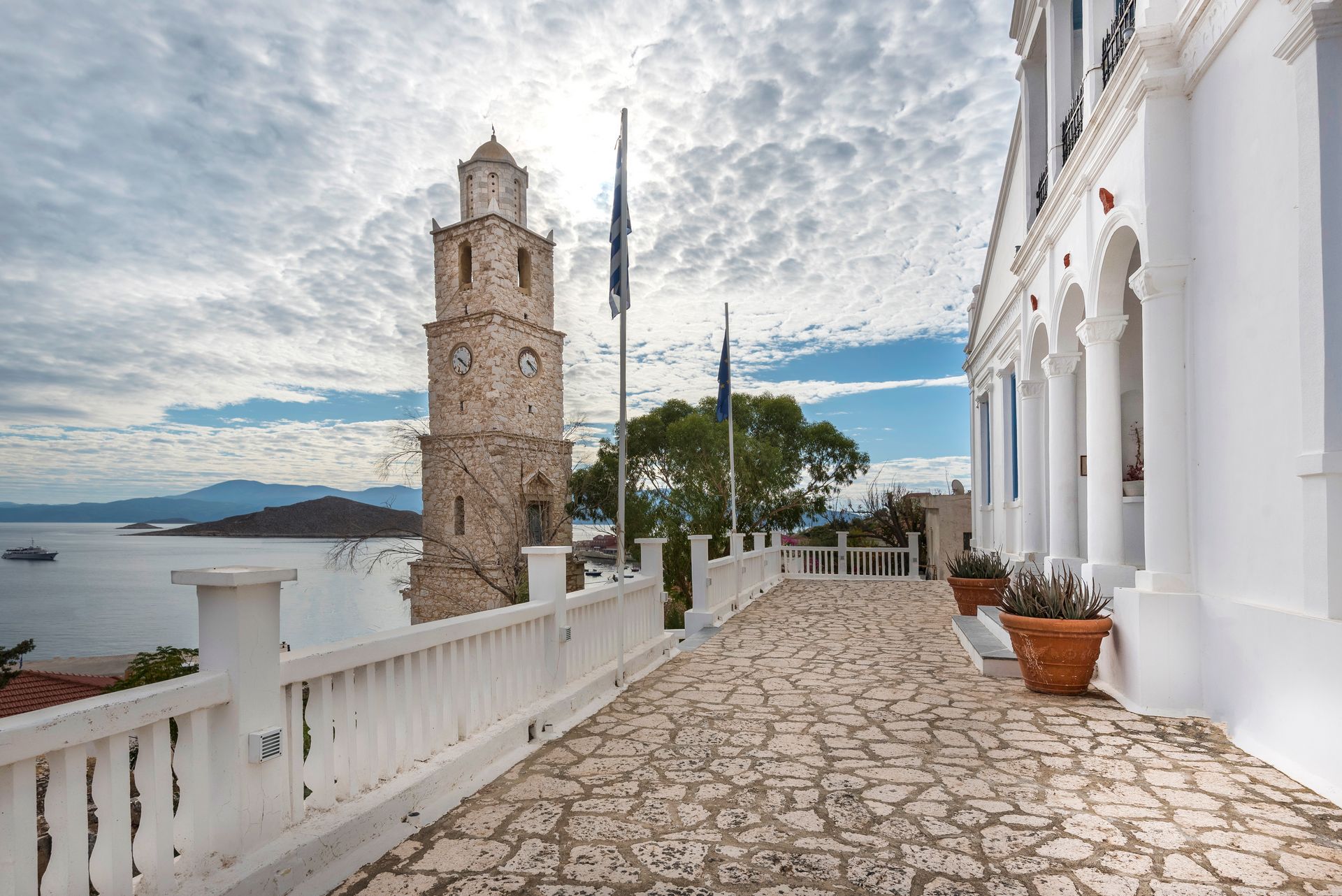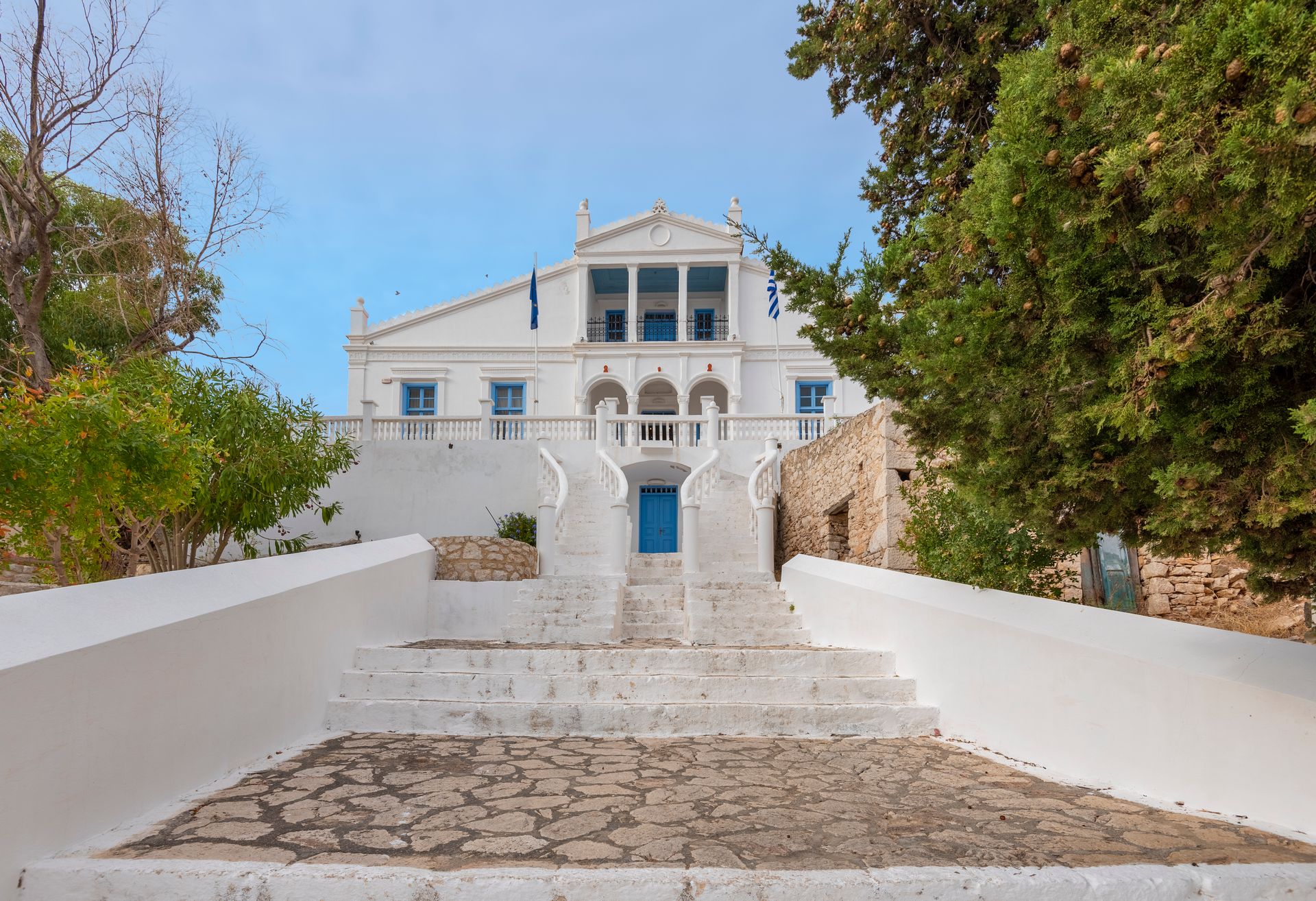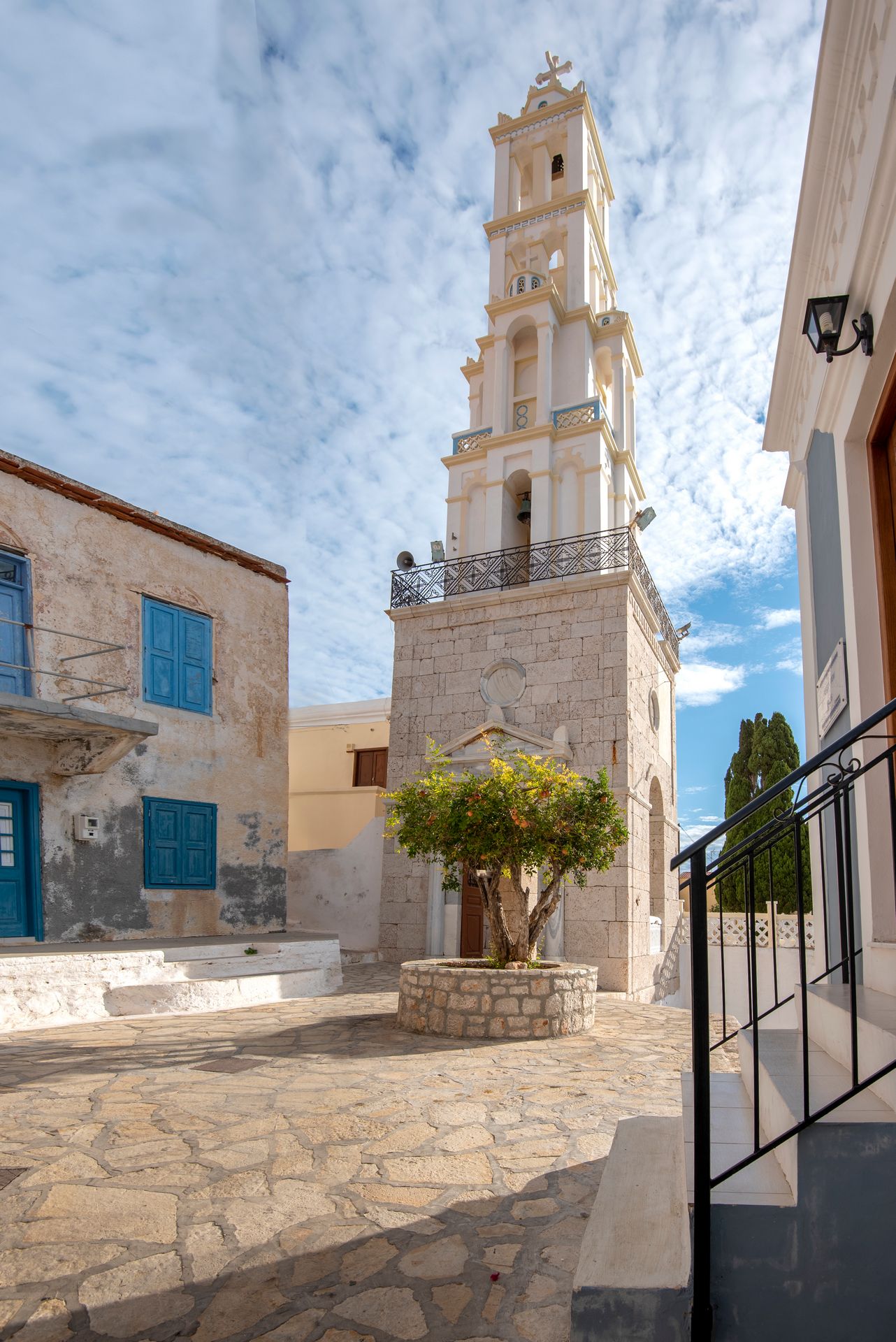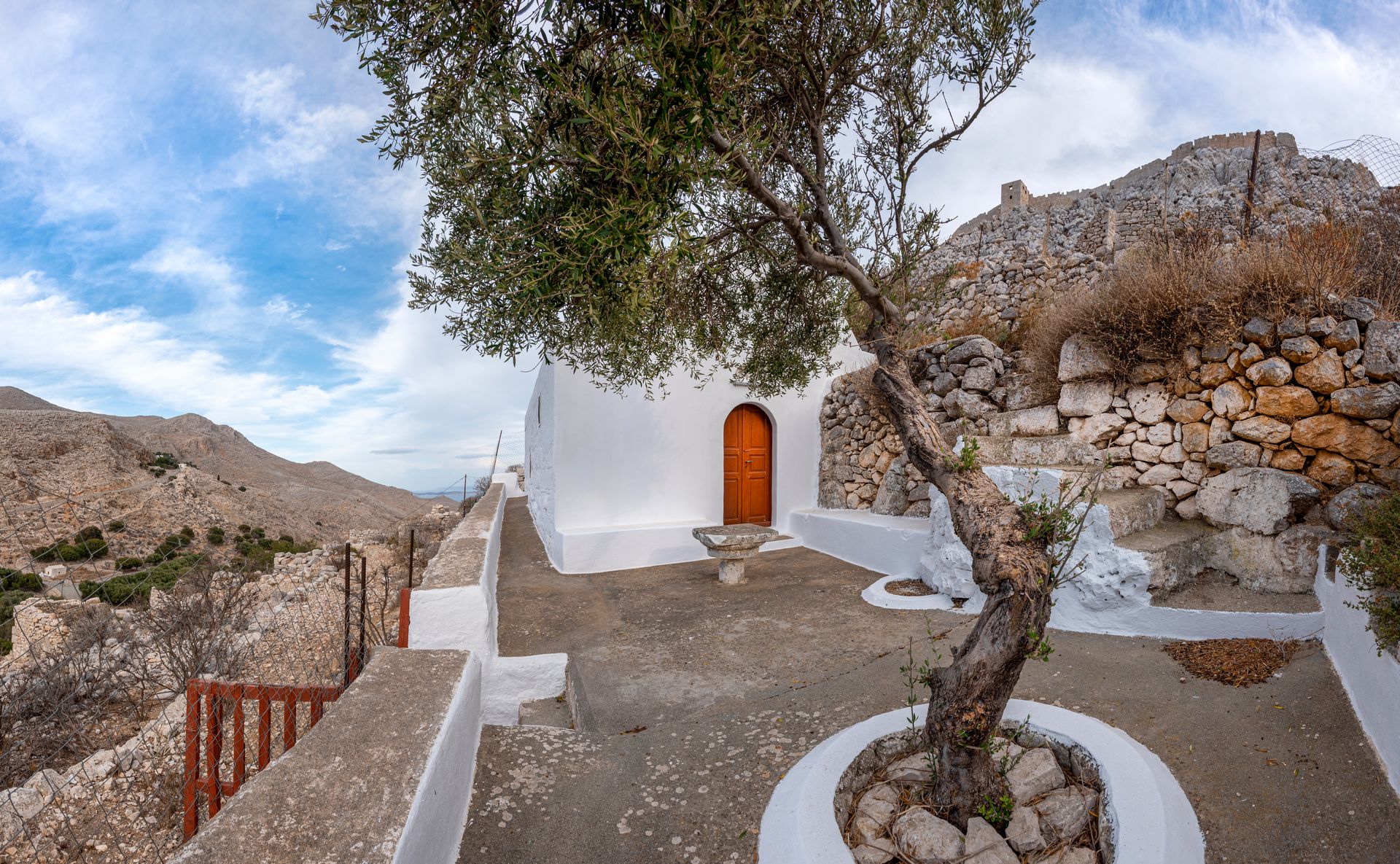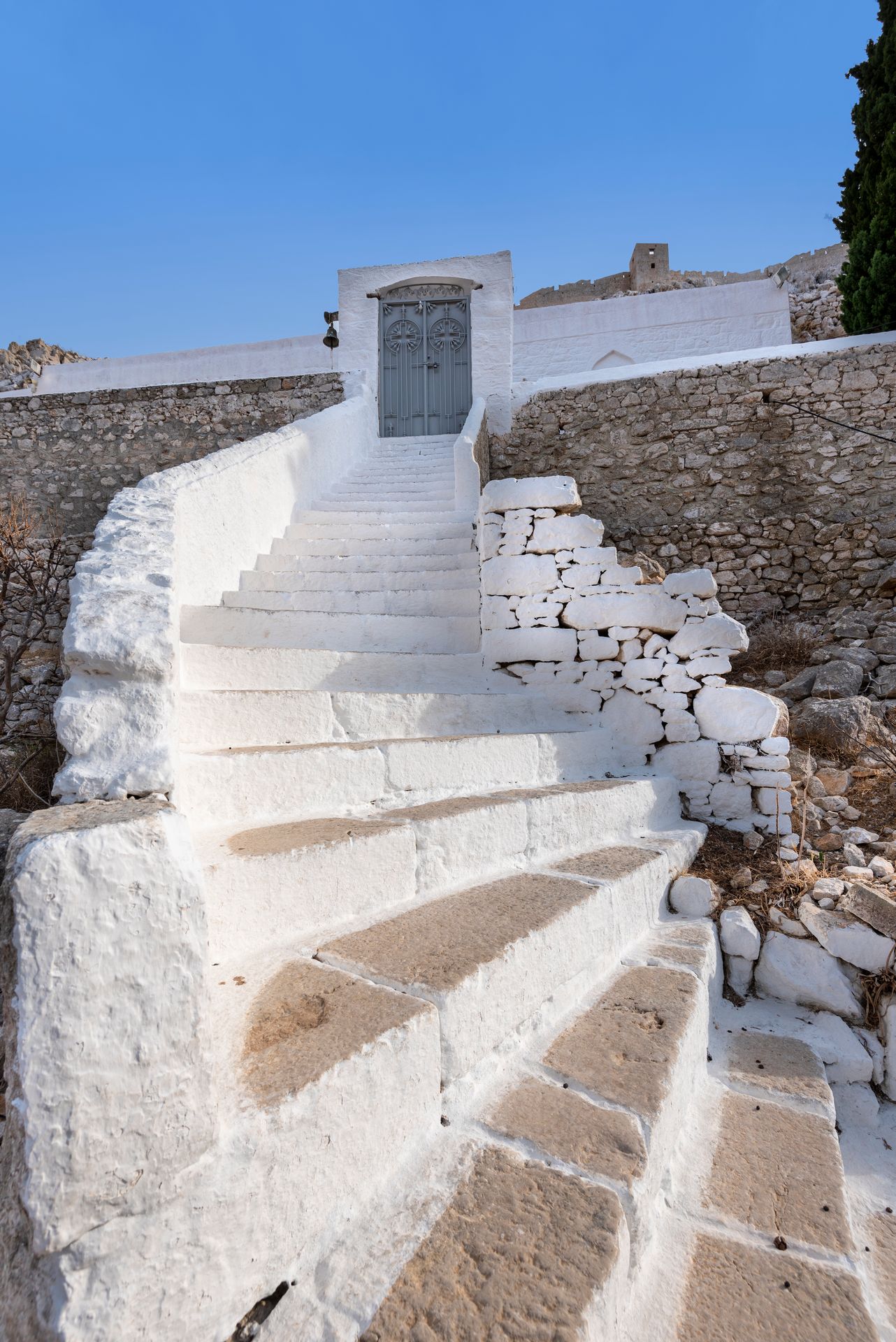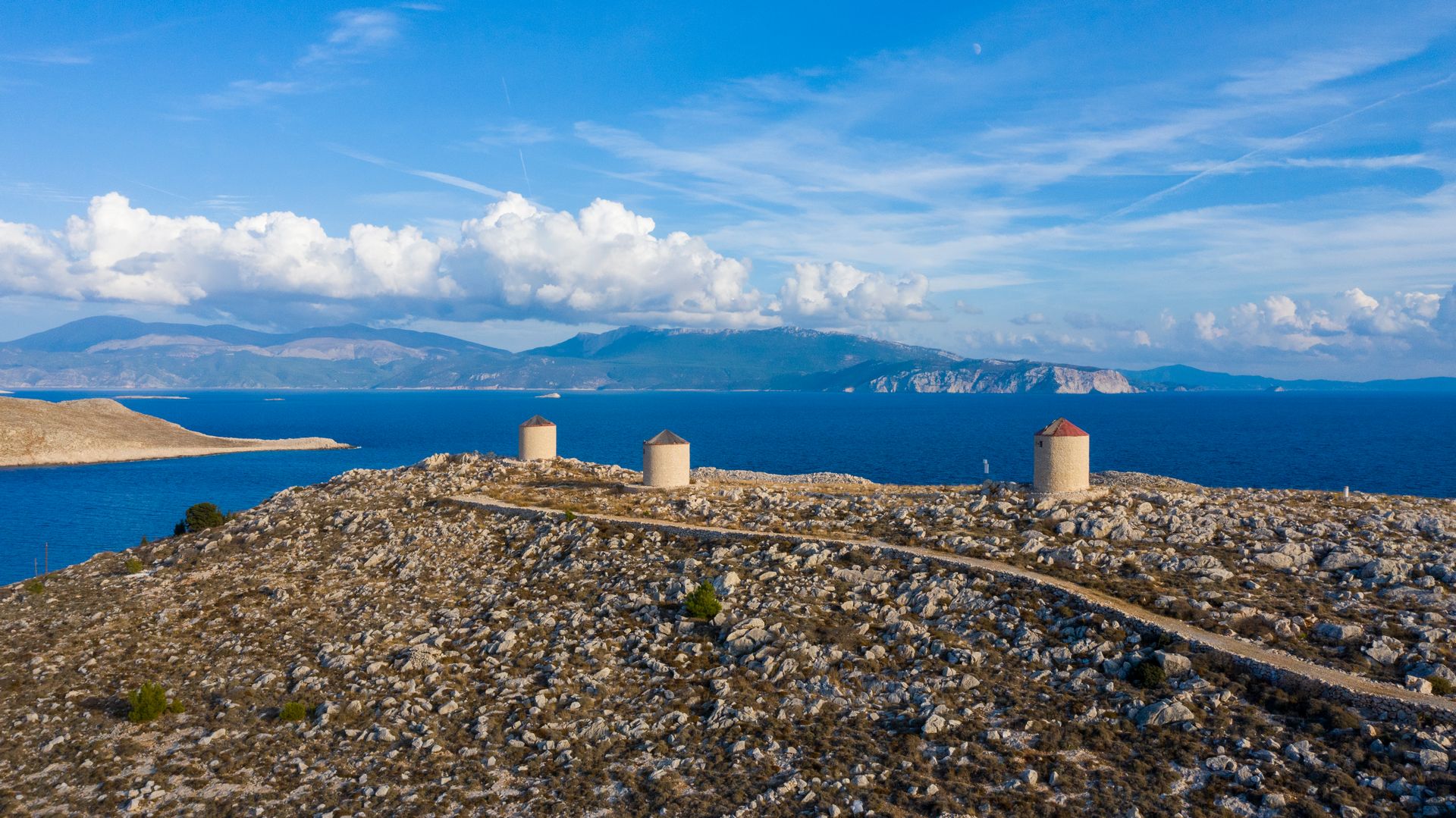Chalki
The island of peace and friendship
Chalki was designated by UNESCO as “The Island of Peace and Friendship” and welcomes anyone seeking calm and relaxing holidays.
Pelagi, Kares, Dorians and Phoenicians all resided on the island at different times. Chalki owes its name to the copper mines which existed during medieval times. Overall, there are very few historical findings that shed light on the history of Chalki. Throughout antiquity, the island was divided into 30 municipalities and formed an alliance with Rhodes from an early stage. The ruins of three temples dedicated to Apollo, well preserved, confirm the fact that the god was worshiped throughout antiquity, at a time when Chalki was known mainly for its sponge fishing.
In the 14th century the Knights of Rhodes granted Chalki to the Assanti family as a fief. The family built their Castle above the ruins of an ancient fortressed acropolis. Further downhill, at Trahia, ruins possibly from a prehistoric settlement as well as classical and Hellenistic walls have been discovered.
From the mid-19th century onwards and under Turkish domination, Chalki reached the golden age of prosperity. Along with Symi, Kalymnos, and Kastellorizo the islands developed their trade, sponge fishing and considerably increased the population’s intellectual and financial status. Unfortunately, in the final years of Turkish rule and during Italian domination the privileged rights once given to the island were removed, trade and sponge fishing took a hit and the “bleeding” of the population with the wave of immigration started. Chalki’s integration with the rest of Greece took place in 1948.
The island’s only populated village, Chalki or Nimborio, is positioned amphitheatrically around the windless harbor. Two sleepless guards, the small islands of Nisos and Krevati, stand protectively at the harbor’s entrance facing the two and three storey uniform stone houses with their balconies, colorful doors and windows and tiled roofs. The village has been classed as traditional and became an honorary municipality. It exudes class gut also creates a sense of sadness when realizing how many of these beautiful houses have now been abandoned.
They stand proud, however, with their back seemingly resting on the bare mountains, which in turn surround the small town providing an air of grandeur and an appealing sense of mystery. As you stroll along the scenic roads, do not forget to look out for the neoclassical Council building, dating back to the 19th century, and the stone Clock tower standing beside it, tall and proud. If you visit the church of the island’s patron saint, AgiosNikolaos, built in 1861, you can admire the unique belfry, the hagiographies and rare wooden iconostasis.
A 2.5 km long road provides a pleasant walk and leads you to the old capital of Chalki, Horio, with is old stone houses build in amphitheatrical fashion on the hill below the Castle. 4.000 inhabitants once lived here out of fear of pirates as was the case with almost all the other islands. When this danger started to wear out, around 1850-1870, the residents of Horio established the seaside town of Nimborio and gradually abandoned their initial nest, which is now deserted.
On the top of the hill above the village, towers the Castle of the Knights with a breathtaking view of neighboring Rhodes. Numerous churches and monasteries enrich the list of sights to see at Chalki which is completed by Kamenos Spilios in Amiglai.Here, in 1658, Morozoni extinguished the islanders hiding in the cave by setting fire to its entrance.
The island currently has 300 permanent residents which occupy themselves with tourism, a field which developed substantially after 1983 when the appropriate infrastructure was created and the island was declared the worldwide Centre of Peace and Friendship.
